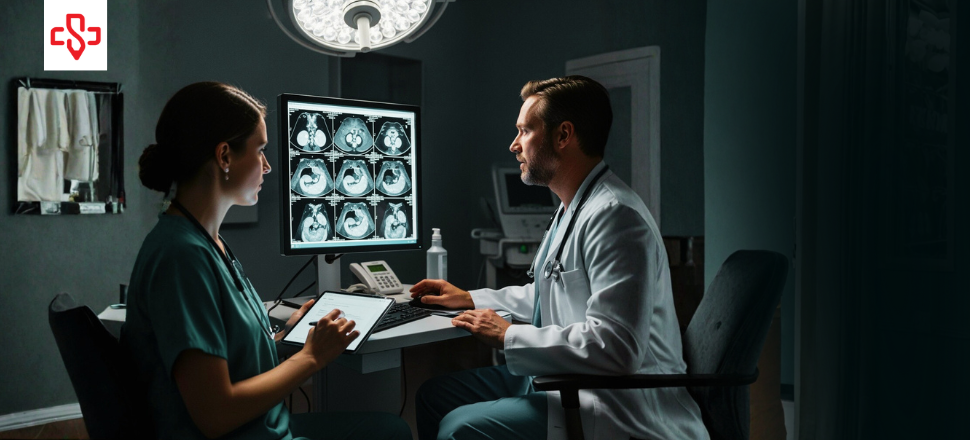In modern healthcare, patient satisfaction isn’t just a “nice to have”—it”’s a performance metric tied directly to reimbursement, reputation, and retention. But for providers buried in electronic medical record (EMR) tasks, meaningful patient interactions often take a back seat.
That’s why many hospitals and clinics turn to live medical scribes. By handling documentation in real time, medical scribes give providers back the most valuable commodity in medicine: time with patients. The result is more eye contact, clearer communication, and stronger trust—all of which boost patient satisfaction scores.
The Link Between Documentation and Patient Experience
Providers spend a shocking amount of their time on EMRs. According to the AMA, for every hour physicians provide direct clinical face time to patients, nearly 2 additional hours are spent on EHR and desk work. That imbalance is noticed by patients, who often feel their providers are more focused on screens than on them.
EMR scribes change that dynamic. By managing documentation, they allow providers to:
- Spend more time listening and engaging.
- Provide detailed explanations without rushing.
- Maintain eye contact and body language that conveys empathy.
When patients feel heard and understood, satisfaction scores rise.
Why Live Medical Scribes Make the Difference
- Real-Time Presence
Unlike telescribing or remote models, live emergency department scribes are physically in the room. This allows providers to shift focus entirely to patients, while scribes keep charts updated without delays.
- Capturing Nuance
Providers often use shorthand or gestures to communicate exam findings. A live medical scribe captures these subtle details, ensuring charts are complete without pulling the provider away from the patient.
- Seamless Integration
On-site scribes blend into the workflow, reducing interruptions. Patients see a cohesive care team rather than a distracted provider juggling both care and documentation.
Patient Satisfaction in Emergency Departments
Emergency medicine is fast-paced and stressful for patients. Long waits, rushed interactions, and providers tethered to screens all contribute to negative experiences.
With ED medical scribes in place, providers can:
- Explain diagnoses and next steps more clearly.
- Spend more time reassuring anxious patients.
- Reduce delays caused by documentation bottlenecks.
As the American College of Emergency Physicians notes: “Patient perception of provider attentiveness is a key driver of satisfaction in emergency care.”
Live scribes give providers the bandwidth to deliver that attentiveness.
Specialty Clinics: Trust Through Engagement
In specialties like dermatology and cardiology, where patient volumes are high, satisfaction depends on providers balancing efficiency with communication.
Live scribes:
- Document procedures, test results, and care plans as they occur.
- Allow providers to explain findings without breaking eye contact.
- Create smoother patient flows, reducing wait times.
Whether a dermatologist is discussing biopsy results or a cardiologist is adjusting medications, patients appreciate providers who are fully present.
Reducing Burnout, Improving Attentiveness
Burnout isn’t just a provider problem—it affects patients too. A distracted, fatigued physician is less likely to deliver empathetic care. By reducing after-hours charting and EMR fatigue, live scribes help providers stay energized and attentive during patient encounters and reduce burnout.
When providers feel less overwhelmed, patients benefit directly. They receive care from professionals who are focused, engaged, and able to give them their best.
The Ripple Effect of Higher Satisfaction Scores
Patient satisfaction scores influence more than public perception. They affect hospital reimbursements, provider evaluations, and even competitive positioning in crowded markets.
By supporting providers, live medical scribes contribute indirectly but significantly to:
- Higher HCAHPS Scores: Improved communication drives better survey results.
- Increased Referrals: Satisfied patients are more likely to recommend providers.
- Better Retention: Patients who trust their providers are more likely to return for follow-up care.
In this way, scribes become silent contributors to both patient loyalty and hospital revenue.
Why Remote Models Fall Short
While telescribing and virtual models can support certain workflows, they often fail to deliver the same impact on patient satisfaction.
- Delayed Documentation: Remote scribes may lag, pulling providers back into the EMR mid-visit.
- Context Gaps: Without observing body language and environmental cues, important details can be missed.
- Weaker Team Presence: Patients may feel providers are still divided between documentation and care.
For organizations that prioritize patient satisfaction, live medical scribes remain the superior choice.
Satisfaction Starts With Attention
Patient satisfaction isn’t built on technology alone—it’s built on connection. And in today’s EMR-heavy environment, providers can’t maintain those connections without support.
By handling documentation in real time, live medical scribes allow providers to focus fully on their patients. From emergency departments to specialty clinics, scribes improve attentiveness, communication, and trust—the pillars of high satisfaction scores.
For hospitals and clinics aiming to balance efficiency with patient experience, the solution is clear: support providers with live scribes, and let patients feel the difference. Scribe.ology provides dedicated live medical scribes who enhance both clinical efficiency and patient satisfaction.
Get a quote from Scribe.ology to boost satisfaction scores, reduce burnout, and deliver the compassionate care patients deserve.



